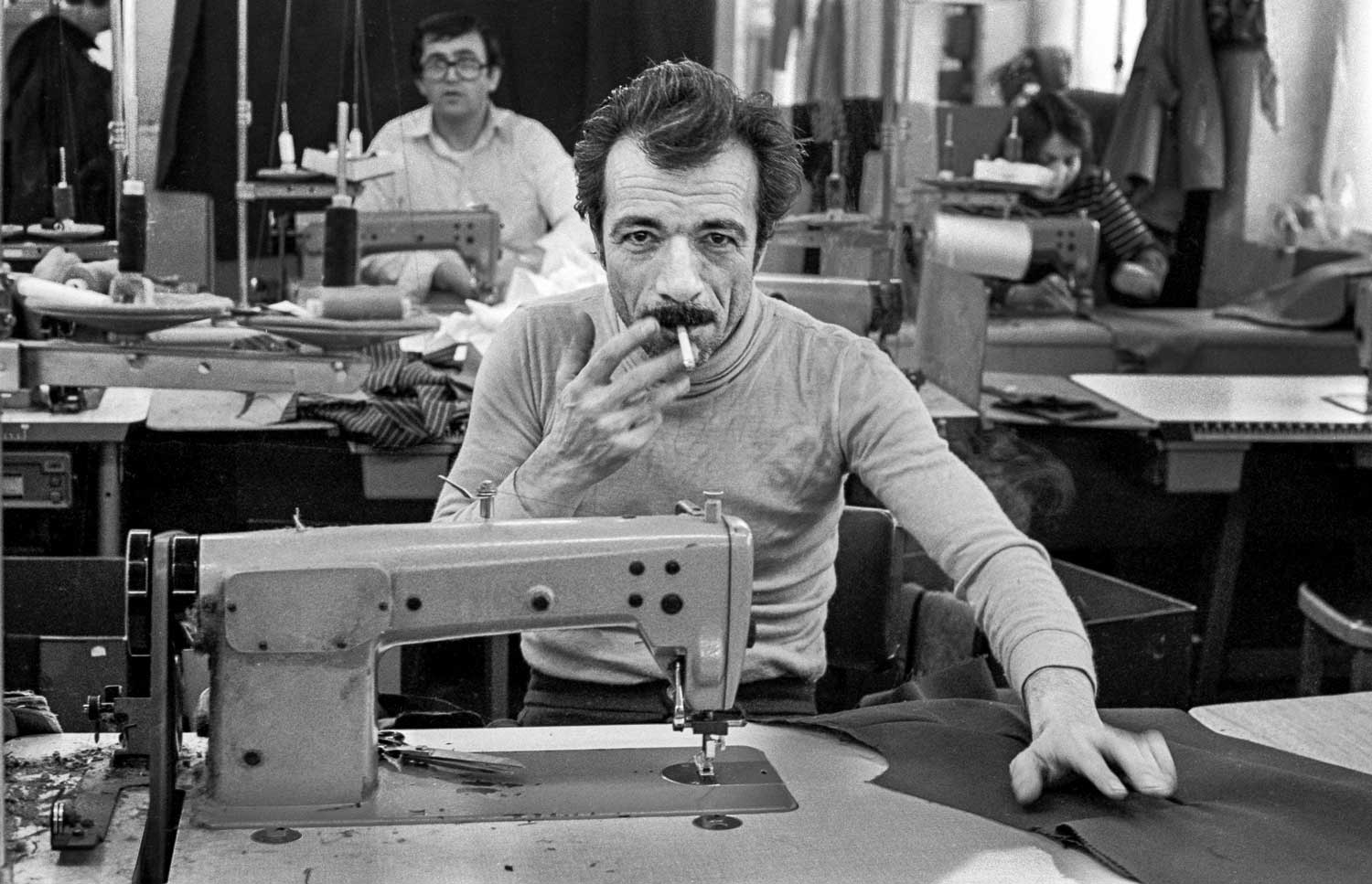Black and white photos of pre-gentrification Hackney
- Text by Huck
- Photography by Neil Martinson

Neil Martinson was still at school when he first picked up the camera. Growing up in Hackney during the ’70s, he saw it as an opportunity to engage with a world much larger than the one immediately available to him – one that felt, at times, fairly unforgiving.
“It was a cultural wasteland,” he says, describing his neighbourhood back then. “There were no bookshops, derelict houses littered the streets, and the cinemas were closing one by one. It was a depressing place to be. Many people just got out.”
Photography, though, provided respite. Not only did his surroundings open up, but people – interactions – did too. The “magic” that came with developing and printing his own photos kept him hooked, even when he was still finding his feet as a storyteller.
 “It was very hit and miss at the beginning. My first camera was a Russian Zenit-E – built like a tank. It wasn’t an easy camera to use compared to how they developed. I couldn’t afford much film so I had to be careful in thinking about what photos to take.”
“It was very hit and miss at the beginning. My first camera was a Russian Zenit-E – built like a tank. It wasn’t an easy camera to use compared to how they developed. I couldn’t afford much film so I had to be careful in thinking about what photos to take.”
While he was primarily documenting what he could see around him, Martinson was always particularly concerned with social action. As he grew older, much of his work began to centre around campaigns and activism: from the occupation of Hackney Town Hall in 1981, to a long-term project on the housing crisis that played a role in successfully convincing the local council to change its policy on putting up homeless families in squalid, run-down hotels.

 Now, all of that work features together in Hackney Archive: Work and Life 1971 – 1985, the seventh instalment in Hoxton Mini Press’ Vintage Britain series. Taking the reader on a 14-year journey, it begins with Martinson’s first pictures, before concluding with Hackney on the cusp of sweeping gentrification.
Now, all of that work features together in Hackney Archive: Work and Life 1971 – 1985, the seventh instalment in Hoxton Mini Press’ Vintage Britain series. Taking the reader on a 14-year journey, it begins with Martinson’s first pictures, before concluding with Hackney on the cusp of sweeping gentrification.
“Cities and places within them have always changed,” Martinson says. “My grandparents came from Holland and Russia to make new lives. Many of the factories I documented [during the ’70s] lay empty for 15-20 years. But some are now loft apartments, or have been taken over by the digital industry.”
“Immigration always brought new energy and ideas. The empty houses and cheap rents in the ’70s and ’80s created the space for artists, radicals and diversity. That’s changed and it’s only people with money that can afford to move to Hackney. So… it’s a mixed blessing.”






 Hackney Archive: Work and Life 1971 – 1985 is available now from Hoxton Mini Press.
Hackney Archive: Work and Life 1971 – 1985 is available now from Hoxton Mini Press.
Enjoyed this article? Like Huck on Facebook or follow us on Twitter.
You might like

Analogue Appreciation: Joe Armon-Jones
All The Quiet (Part II) — In an ever more digital, online world, we ask our favourite artists about their most cherished pieces of physical culture. Today, it’s keyboardist, producer and Ezra Collective member Joe Armon-Jones.
Written by: Joe Armon-Jones

Largest-Ever Display of UK AIDS Memorial Quilt Opens at Tate Modern
Grief Made Visible — Comprising hundreds of panels made by lovers, friends and chosen family, the UK AIDS Memorial Quilt returns in full for the first time since 1994 – a testament to grief, friendship and the ongoing fight against HIV stigma.
Written by: Ella Glossop

In Medellín’s alleys and side streets, football’s founding spirit shines
Street Spirit — Granted two weeks of unfettered access, photographer Tom Ringsby captures the warmth and DIY essence of the Colombian city’s grassroots street football scene.
Written by: Isaac Muk

Remembering New York’s ’90s gay scene via its vibrant nightclub flyers
Getting In — After coming out in his 20s, David Kennerley became a fixture on the city’s queer scene, while pocketing invites that he picked up along the way. His latest book dives into his rich archive.
Written by: Miss Rosen

A reading of the names of children killed in Gaza lasts over 18 hours
Choose Love — The vigil was held outside of the UK’s Houses of Parliament, with the likes of Steve Coogan, Chris O’Dowd, Nadhia Sawalha and Misan Harriman taking part.
Written by: Isaac Muk

We are all Mia Khalifa
How humour, therapy and community help Huck's latest cover star control her narrative.
Written by: Alya Mooro

